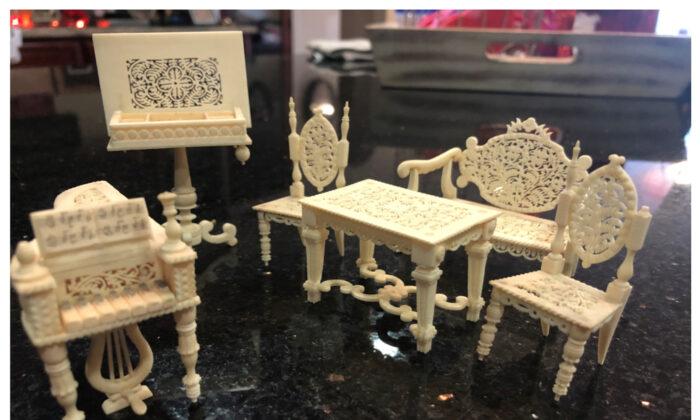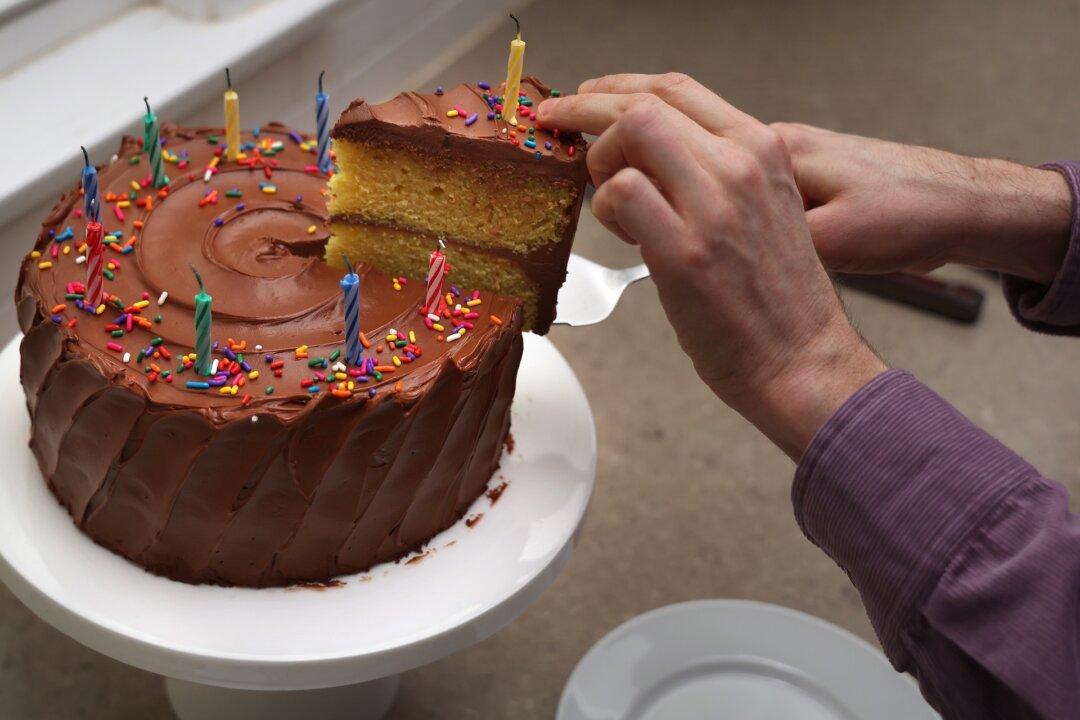Dear Helaine and Joe:
I am wondering what you could tell me about this set of ivory miniature furniture. I think my grandmother might have received it from a San Francisco family she worked for as a nanny around World War I. The family may have given it away because it had the name of a German town on the little easel. A few of the pieces are broken because they have been through a few earthquakes. When I was a little girl, it was always kept in a case behind glass. Any information would be appreciated.
Thank you,
L. R.
Dear L. R.:
We have some good news. The pieces are not made from any kind of ivory — not elephant ivory, not walrus ivory, not whale ivory, not even vegetable ivory. Instead, these pieces were carved from bone — probably good old bovine bones of some nature.
How do we know this? We suspected they were bone just from a cursory look at the photographs, but closer inspection of one revealed tell-tale dark specks on the lid and inside divisions of the miniature sewing table. This is really all we needed to see to know the pieces of dollhouse furniture are bone, probably carved in India during the time of the British Raj (1858-1947). We believe this particular set is circa 1900.
The set appears to consist of the aforementioned easel and sewing table complete with tiny sewing implements inside, plus a bookcase/cabinet filled with books and whatnot, a sofa, two side chairs, a table and a piano with sheet music. To be sure, we do see damage and loses, but we also see the bookcase/cabinet contains several of the small lopped-off appendages and we hope this means that repair would not be all that difficult for a professional.
To us, one of the more interesting of the pieces is the easel with a photograph, which appears to be of the German spa town of Bad Neuenahr (now Bad Neuenahr-Ahrweiler). Specifically, we think the picture may be of the Thermal Badehaus und Kurhaus, a building in Bad Neuenahr that dates to 1900.
The picture we have of the easel is fuzzy, but we think we see the distinctive fountain out front of the Thermal Badehaus. But we could be mistaken. In any event, the photograph appears to be a small single panel from a stereo view of Bad Neuenahr and suggests the set might have been a souvenir from the famous spa town.
This type of Anglo/Indian bone furniture with its filigree components is not unique and pieces do turn up from time to time. But the added element of the photograph on the easel makes the set somewhat more interesting and desirable to collectors. L. R. should value her set for retail purposes in the range of $800 to $1,000.






